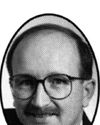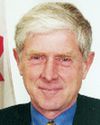Mr. Speaker, here we are again on Bill C-69 which started out as Motion No. 12 or 13 some time ago when there was a revolt on the Liberal backbenches because they saw some new maps which changed the boundaries of their ridings shortly after the last election.
Now we are at the stage where we have a new readjustment act nearing its final stage of debate. We are at report stage. There will be third reading and then it will go to the Senate.
We have proposed several amendments but they can be categorized in two major groups, the first being Motion No. 5 which has implications to Motions Nos. 1 and 2. Motion No. 7 is the other. Motion No. 5 is related to Motion No. 7.
These amendments are proposed to bring Bill C-69 into line with the principle of equality of vote. First, the population range within which constituencies are allowed to vary from the provincial quotient should be reduced from plus or minus 25 per cent to plus or minus 15 per cent. Second, whatever variance is in place should be an absolute limit.
Our second group of amendments takes away the discretion of the boundary commissions to exceed the limit in exceptional circumstances. It relates to clause 19(2) which sets the variable quotient at 25 per cent. Our amendment reduces the quotient to 15 per cent. This change is listed as our amendment No. 4.
Our first and second amendments are consequential to this change and are necessary for the continuity in legislation. They appear earlier in this bill which is why they must be dealt with first, even though they are consequential.
Let me touch on the reasons for moving to a 15 per cent variance in the population quotient for a province. Large variances in the population of constituencies are basically unfair. Constituencies significantly lower than the provincial average population are over represented in Parliament. Because the number of seats within a province is fixed, if one group is over represented another group must be under represented. This unfairness cannot be entirely eliminated but it must be greatly reduced to tighten the variance.
Many jurisdictions would see a variance of even less than 5 per cent. Certainly we are being most reasonable when we suggest the variance be limited to plus or minus 15 per cent of the provincial norm.
Equality of voting power is already stretched because our Constitution provides more seats in certain provinces than they would ordinarily receive based solely on their population.
A 25 per cent variance allows for constituencies to be established with up to a 67 per cent difference in population as of the time of census. Redistribution occurs three to four years later. The population variance could be even greater by the time redistribution is done. By contrast, a 50 per cent variance allows for a 35 per cent variance in population of the ridings within the same province.
A 35 per cent difference in population gives enough discretion to the boundary commissions to allow for considerations such as reasonable criteria regarding community of interest, rapid growth and the concerns of rural areas.
Allowing a 67 per cent difference in the population creates too much opportunity for drawing boundary lines around linguistic, cultural and ethnic communities. It is important that all aspects of electoral law treat all citizens equally regardless of race, gender, culture, religion or ethnicity. A tighter variance encourages the equitable treatment of all citizens by the boundary commissions.
Unusually large ridings do not need significantly lower populations to make them workable. There are other ways to accommodate those members and their constituents; for example, slightly larger office budgets or extra staff for travel. Increased use of communications technology can negate the need for some of the travel. When interconstituency travel is necessary, additional travel points can be used for travel within extremely large constituencies.
One complaint we heard over and over again primarily from Liberal backbenchers and also from a few of the Bloc Quebecois MPs at the committee was they were concerned about the unmanageability of their large rural constituencies. They seemed to feel that putting at risk the high standards we hold for the quality of voting power of Canadians was a worthwhile sacrifice to maintain their rural ridings at their present sizes. Some argued they were too large and should be made smaller.
The House of Commons is built on the principle of representation by population, not representation by geography of region. It therefore stands to reason that if any given area loses population, either in absolute terms or relative terms, on principle the number of MPs should also decrease.
It is important to tighten the variance used by the majority of constituencies because the legislation also proposes allowing special case ridings to exceed the population limits. A large variance in the exception rule is individually bad. In combination they weaken the concept of voter equity to the point at which it is almost meaningless.
A number of rural MPs were concerned about the geographic size of the ridings they had to represent. A smaller but also a strongly supported argument before our committee was that the urban ridings were growing so quickly they also became unmanageable for their members. It was rather odd to see urban and rural members arguing for two different clauses in section 19 of the bill which were at counter purposes to each other, both hoping they would be able to protect their own turf.
What this points out more than anything else is the importance of members not being on the front lines of negotiations when boundary lines are being drawn. In many instances members showed a rather sad self-interest in the whole process. They wanted to maintain the status quo because they wanted to maintain their own riding boundaries so they would be more comfortable. This is natural but that does not mean it is correct.
The other issue that we took exception to is clause 19(3), which allows boundary commissions to go beyond the minus 25 per cent rule. If the plus or minus 25 per cent rule was not enough, this clause actually allows the commissioners to exceed that variance and put additional ridings under a schedule. Our amendment deletes this entire clause. This makes the population variance an absolute number. This is listed as amendment No. 7, and amendment No. 3 is a consequential amendment to this change.
There are reasons for opposing exceptions to the rules. Allowing boundary commissions to exceed the population limits for constituencies makes whatever variance is in the act meaningless. If boundary commissions are permitted to exceed the limit any time they want, why have a limit? It would be like being allowed to exceed the speed limit if it were for a good reason.
The increased over representation caused by exceeding the minimum population defined by the variance would create more under-representation elsewhere in the province and that would stretch voter equity even further.
There are very few ridings under the schedule now. Many MPs were arguing there should be more. They were saying: "My riding is not under the schedule at the current time. I would sure like it to be there. Let us make sure that we draft a piece of legislation that allows for my riding to be included".
We saw many from northern Ontario. We saw a very interesting amendment in the Order Paper. Fortunately it has been withdrawn. It stretches believability that some members from northern Ontario could be so protective of their turf and not want to lose their riding, even though the population of Ontario dictates that should be the case. We saw the same ridiculous arguments from the province of Quebec and the separatists. It is funny that the Liberals and the separatists should be speaking from the same page on this one, both trying to represent sparsely populated rural ridings, trying to put them on the schedule for partisan purposes. It is very unfortunate.
If exceptions to the rules are included in the legislation, everyone with a rural or northern riding will be trying to prove they deserve to be exempted. This will create difficulties for the commissions which will be faced with many costly and time consuming appeals for exceptions.
Liberal backbenchers may again demand the maps be redrawn to their liking if they do not get all the exempted ridings they want. It will be very interesting to see the response of many of these members when they see the new maps, yet again for the second time, and see their concerns were not addressed. We simply cannot draw the boundaries where they were the last time when redistributing the ridings.
If the 25 per cent variance has already passed for ridings within the same province, which will already be allowed to vary by 67 per cent, no further allowance can in any way be justified as necessary to meet the unusual circumstances.
We have in one end of the country Labrador. It is a scheduled riding because it is not a part of the island of Newfoundland. That seems to be justification for this large rural riding to be set apart. We see on the other coast the riding of North Island-Powell River. The boundaries of that riding are partly on the island but extend to the mainland. It is rough, wild, natural terrain, beautiful country. Why should there be two sets of rules, particularly if we have a variance of plus or minus 25 per cent to begin with?
If exceptions are allowed some ridings within the same province could be established at the time of redistribution which would double the population of others. In Newfoundland the difference between the largest and smallest riding population is well over 300 per cent, more than triple. Labrador has about 30,000 people and St. John's West has 101,000. Is that kind of distribution of voting power fair to the people of St. John's? No, it is not. That needs to be looked at.
This legislation will encourage that practice to continue, rather than discourage it because it has the very broad term extraordinary circumstances. Of course, extraordinary can be interpreted just about any way the commission feels reasonable. There is very little direction in this act as to what extraordinary circumstances are as far as isolation and difficulty of accessibility are concerned.
In Ontario the last distribution map stayed within the plus or minus 25 per cent limit. However, the difference between Algoma and Scarborough North, the smallest and largest populations, is 42 per cent.
One of the reasons the Liberals squashed those redistribution maps is they said the maps were unfair to the north. In other words, there already was an inequity of 42 per cent between the most populous riding and the least populous riding in the province of Ontario with the maps brought forth last year. However, that is not enough. They want a greater discrepancy than that. Forty-two per cent is not acceptable to either the large rural ridings of the north or to the urban ridings, particularly those close to Toronto.
Now the Liberals want to put these ridings into the schedule. They want the difference to be greater; they want more than a 42 per cent variance in the province of Ontario. That is not good representation for the voters of Ontario and certainly is not good for all Canadians.
Mr. Speaker, I am not sure how you are going to be ruling on the Bloc amendment so I will not be able to speak to it at this time. I hope I will be able to because there are some democratic principles in place.
I hope the Liberals will come to their senses and support these amendments. For the betterment of the country, let us finally see them do the right thing, the thing they argued in committee was right but what they then backed away from and voted against, only to bring in an inferior bill.




